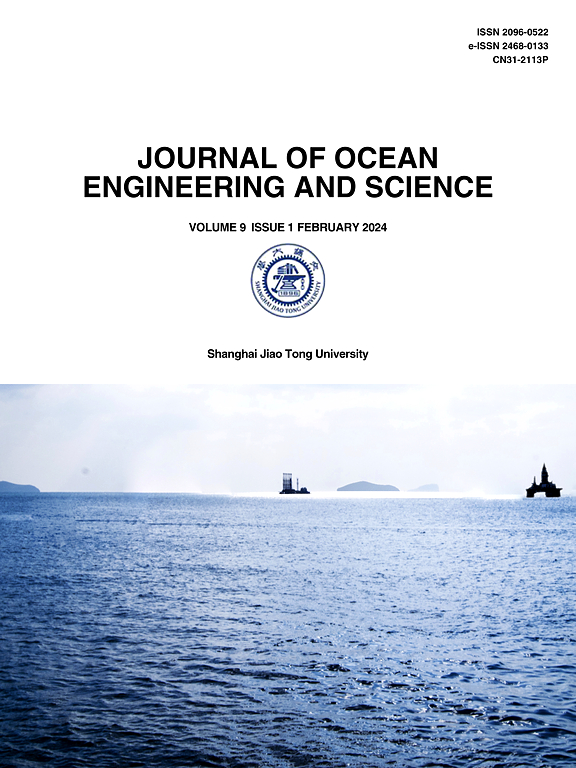A guidance of solid element application in predicting the ultimate strength of flat plates in compression
IF 11.8
1区 工程技术
Q1 ENGINEERING, MARINE
引用次数: 0
Abstract
With the increasing demand in ocean engineering field for the ultimate limit state (ULS) analysis of thick plates, the solid (3D) element has been more frequently used in the ULS analysis. Compared to 2D element, 3D element can better consider the transverse shearing effect during the analysis which usually occurs on thick plates, due to its reliable reflection of geometrical characteristics and kinematic equations of the structures. Besides, 3D element can also facilitate the introduction of influencing factors into the ULS analysis, such as the erosions, cracks and residual stress. This may improve the simulation precision of ULS analysis of thick plate models. Until now, there is a lack of 3D element modelling technique in the ULS analysis of flat/stiffened plates. The present study aims to provide helpful information on 3D elements in the ULS analysis of flat plates under axial compression load. A total of 350 plate scenarios were adopted in the parametric study to consider the effects of 3D element shape (αyz). It is found that the element shape significantly influences the ULS analysis of flat plates, where planar-like 3D element is not recommended. An empirical formula for determining the optimal 3D element shape of the finite element (FE) model is proposed based on the parametric results. A guidance for implementing the 3D elements is then documented, which may help engineers further understand the ultimate strength characteristic of very thick flat plates.
实体元在平板极限抗压强度预测中的应用指南
随着海洋工程领域对厚板极限状态分析的需求日益增加,固体(三维)单元在厚板极限状态分析中得到了越来越多的应用。与二维单元相比,三维单元能够可靠地反映结构的几何特性和运动方程,能够更好地考虑厚板结构在分析过程中经常出现的横向剪切效应。此外,三维单元还可以方便地将侵蚀、裂纹、残余应力等影响因素引入到ULS分析中。这可以提高厚板模型ULS分析的模拟精度。到目前为止,在平面/加筋板的ULS分析中缺乏三维单元建模技术。本研究旨在提供三维单元在轴向压缩载荷下的平板ULS分析中的有用信息。为了考虑三维单元形状(αyz)的影响,在参数化研究中共采用了350种平板场景。发现单元形状对平板的ULS分析有显著影响,不推荐使用平面三维单元。基于参数化计算结果,提出了确定有限元模型三维最优单元形状的经验公式。然后编制了实施3D元件的指南,这可能有助于工程师进一步了解非常厚的平板的极限强度特性。
本文章由计算机程序翻译,如有差异,请以英文原文为准。
求助全文
约1分钟内获得全文
求助全文
来源期刊

Journal of Ocean Engineering and Science
Multiple-
CiteScore
11.50
自引率
19.70%
发文量
224
审稿时长
29 days
期刊介绍:
The Journal of Ocean Engineering and Science (JOES) serves as a platform for disseminating original research and advancements in the realm of ocean engineering and science.
JOES encourages the submission of papers covering various aspects of ocean engineering and science.
 求助内容:
求助内容: 应助结果提醒方式:
应助结果提醒方式:


